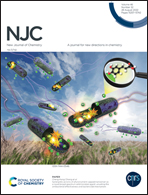Effect of ZSM-5 zeolite porosity on catalytic cracking of n-heptane
Abstract
In this study, the effect of synthesis conditions on the crystal growth, structural features, acidity, and catalytic properties in n-heptane cracking of the hierarchical ZSM-5 zeolite was studied. Therefore, a series of hierarchical ZSM-5 zeolites were synthesized under organic template-free conditions, using a hydrothermal method in various reaction conditions. The synthesized samples were carefully characterized by X-ray diffraction (XRD), Fourier transforms infrared spectroscopy (FT-IR), Transmission electron microscopy (TEM), N2 adsorption–desorption, and temperature-programmed desorption of ammonia (NH3–TPD) techniques. The results showed that the crystallization rate of the hierarchical ZSM-5 is increased with increasing the amount of SiO2 and Na2O in the initial gel, and reaction temperature. Also by changing the initial gel composition and reaction temperature, the porosity, acidity, and crystal size of the hierarchical ZSM-5 zeolite can be controlled. Finally, the role of pore structure and acidity of the prepared ZSM-5 zeolites in the n-heptane cracking reaction was investigated in the present work. The isosteric heats of adsorption and diffusion coefficient results calculated by molecular dynamic simulation predicted that the interaction of heptane molecules with zeolite framework is higher than that of propylene and the interaction of propylene is higher than that of ethylene. The experimental and simulation results show that the selectivity of the ethylene and propylene in the heptane cracking reaction is connected to the acidity and micropore to mesopore ratio of the prepared zeolites.



 Please wait while we load your content...
Please wait while we load your content...